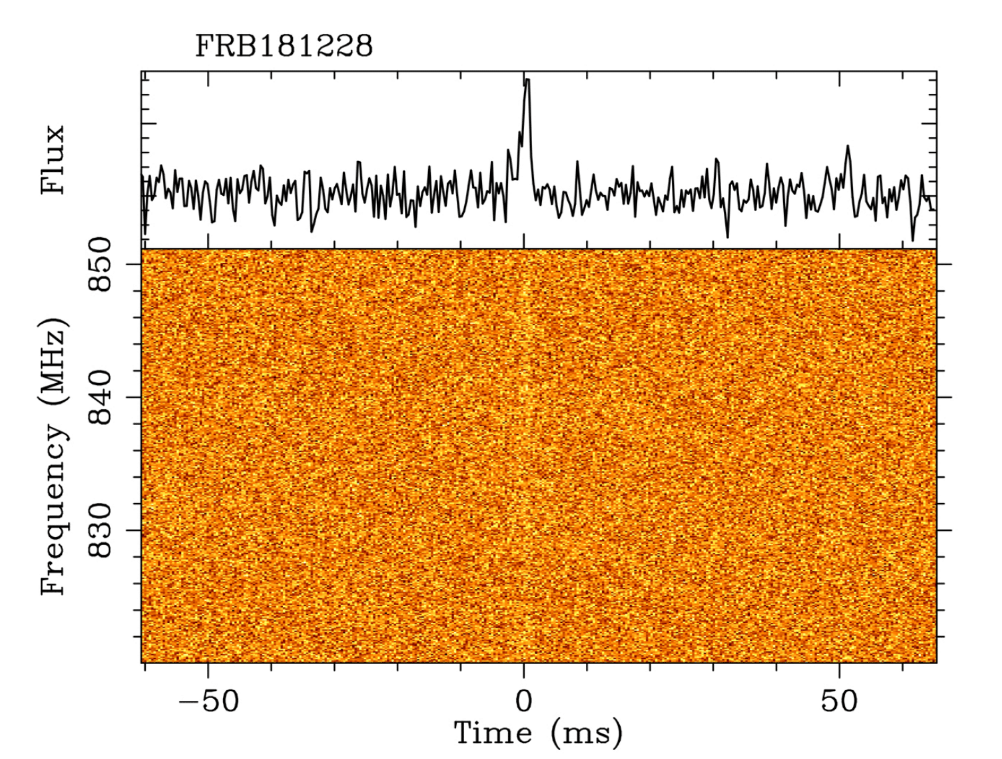At UTC 2018-12-28-13:48:50.1 (2018-12-28.5755799), we found a bright fast radio burst as part of the ongoing search program (UTMOST), at the Molonglo telescope.
Molonglo is a 1.6 km long East-West array (Bailes et al 2017, PASA, 34, 45) and was operating in drift-scan mode with pointing centred on the meridian at the time of detection. Source localisation is excellent in Right Ascension (5 arcsec at 1-sigma) but poor in Declination (~1.2 deg at 1-sigma) (see Caleb et al 2017 MNRAS 468, 3746).
FRB181228 was found during a blind FRB search programme in real-time using an automated GPU-accelerated/machine learning based pipeline and the raw voltages were recorded for offline processing.
The optimal dispersion measure (DM) that maximizes the signal-to-noise ratio is: 354 pc cm^-3. The DM estimate of NE2001 model is ~58 pc cm^-3, and YMW16 model is ~61 pc cm^-3 at this position, resulting in an intergalactic excess of ~290 pc cm^-3. The upper limit on the DM-inferred redshift is thus z ~ 0.26.
An early estimate (lower limit) of the apparent fluence of the event is ~ 18 Jy ms (corrected for attenuation of the primary beam in the RA direction, but not in the Dec direction), width ~ 2.19 ms, with a detection signal-to-noise ratio = 12.
The most likely position is RA = 06:09:23.7, DEC = -45:58:02, J2000, Galactic: Gl = 253.3915 deg, Gb = -26.0633 deg. The 95% confidence localisation arc is as follows: (RA, DEC) in (hours, deg)
6.152928 -48.822722
6.153536 -48.321778
6.154128 -47.820833
6.154706 -47.319889
6.155267 -46.818972
6.155814 -46.318028
6.156344 -45.817083
6.156864 -45.316139
6.157369 -44.815167
6.157861 -44.314222
6.158342 -43.813278
6.158808 -43.312333
6.159264 -42.811389
A formula describing the localisation arc is:
RA = 6.016988 – 4.092281e-3*(DEC – 45.967341) – 2.804353e-05*(DEC – 45.967341)**2
where RA is in hours, Dec is in deg, and is valid in the Dec range [-50.3,-41.6]
For the dispersion sweep, and the localisation plots, follow this link
Follow-up observations of the FRBs are encouraged.
